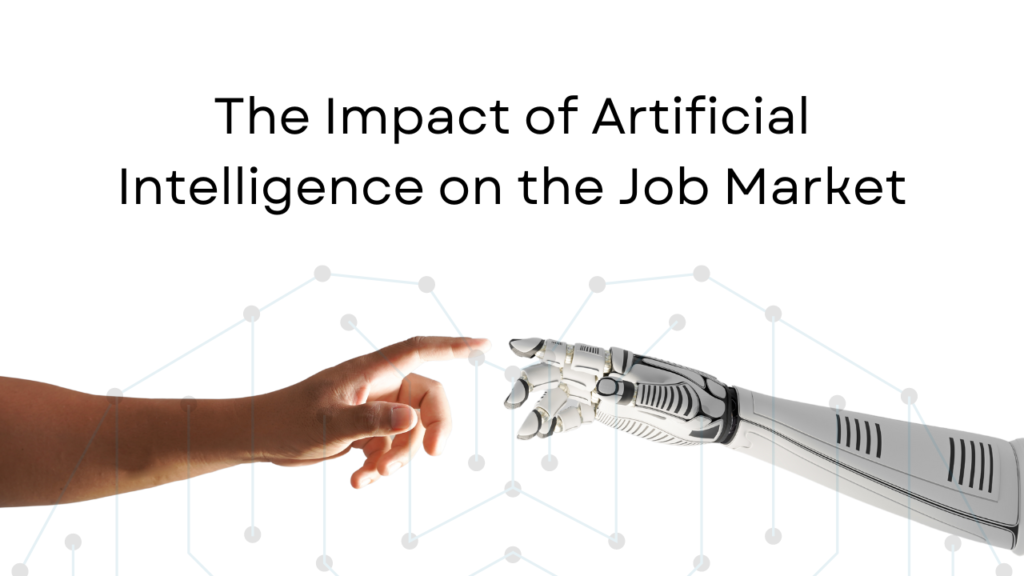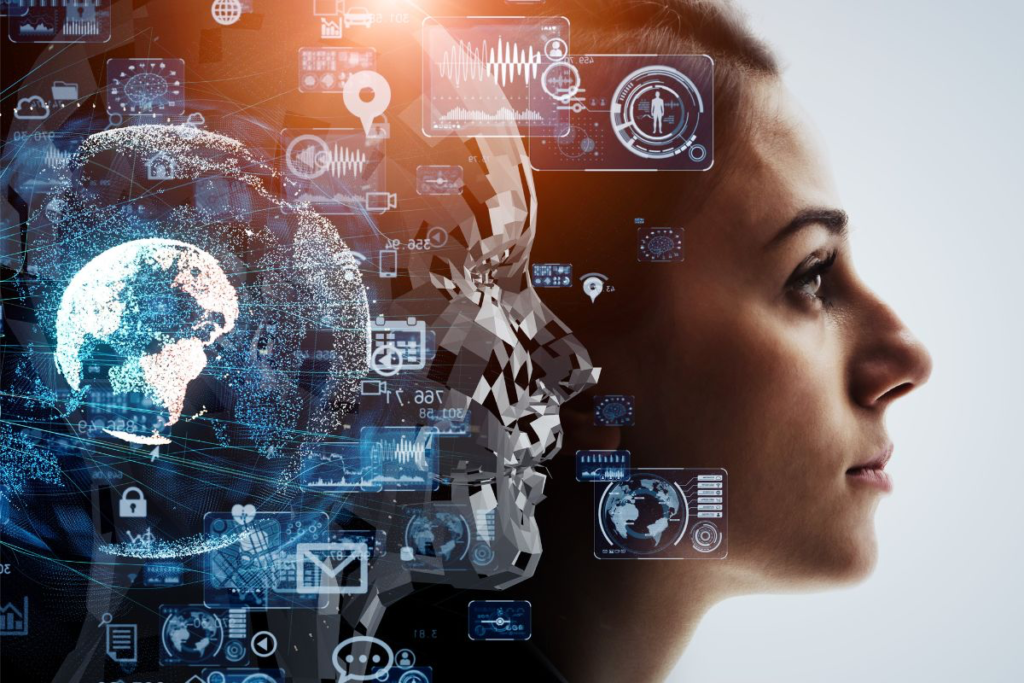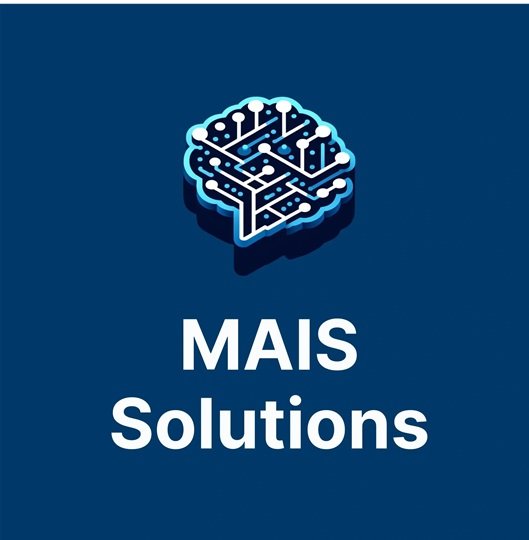Your cart is currently empty!
The Challenges of AI in Society
Back to: MAIS AI Essentials
Ethical Dilemmas in AI Development and Use
The Growing Ethical Landscape of AI
As Artificial Intelligence becomes more ingrained in our daily lives, it brings with it a host of ethical dilemmas that challenge our values and decision-making frameworks. AI is no longer confined to theoretical discussions—it actively influences healthcare, finance, policing, and even personal relationships. This pervasive influence raises critical questions about how we design, deploy, and govern these systems.
At its core, the ethical challenges of AI stem from its dual nature as both a powerful tool for progress and a potential source of harm. Decisions about how AI systems operate, whom they benefit, and how they are held accountable can have profound implications for individuals and society at large.
Key Ethical Concerns
- Bias and Discrimination:
AI systems often inherit the biases present in their training data. For example, facial recognition technologies have shown higher error rates for minority groups, leading to potential discrimination in areas like law enforcement. Such biases can perpetuate existing societal inequalities if left unchecked. - Accountability in Decision-Making:
When AI systems make decisions—such as approving loans or diagnosing medical conditions—who is responsible for errors or harm caused by those decisions? The opacity of AI systems, often referred to as the “black box” problem, complicates accountability. - Autonomy and Control:
AI systems, especially those powered by machine learning, can evolve in ways that their creators did not anticipate. This raises concerns about humans losing control over systems that affect critical aspects of life, from military applications to autonomous vehicles.
Real-World Examples
- Predictive Policing: AI is increasingly used to predict crime patterns, but critics argue it reinforces systemic biases by relying on historical data that disproportionately targets marginalized communities.
- Healthcare: While AI aids in early disease detection, ethical questions arise about privacy and the use of sensitive patient data in training models.
- Hiring Algorithms: Companies use AI to screen job applicants, but biased training data can result in unfair hiring practices, excluding qualified candidates based on race, gender, or socioeconomic background.
The Path Forward
Addressing ethical dilemmas requires a proactive approach that combines technical innovation with moral responsibility. Key strategies include:
- Bias Mitigation: Developing diverse datasets and continuously auditing AI systems for fairness.
- Transparency and Explainability: Ensuring that AI systems are understandable to users and stakeholders, so decisions can be traced and justified.
- Inclusive Governance: Involving diverse voices—including ethicists, technologists, and affected communities—in AI policy-making and development.
AI holds immense promise, but its ethical challenges demand vigilance and accountability. Only by addressing these issues head-on can we harness AI’s potential to benefit society equitably and responsibly.
The Impact of AI on the Job Market

The Shift in the Job Landscape
AI is dramatically transforming the global workforce, redefining how tasks are performed and what skills are required. By automating repetitive and time-consuming activities, AI allows businesses to operate more efficiently. However, this progress comes with challenges, particularly for workers in industries most vulnerable to automation, such as manufacturing, retail, and transportation. Entire sectors are being reshaped, creating both opportunities and disruptions.
For instance, robotic systems are streamlining production lines, while AI-powered customer service tools are replacing roles traditionally filled by human workers. On the other hand, AI is also augmenting human capabilities in fields like healthcare and finance, where decision-making and expertise remain vital. This dual role—automation and augmentation—is central to understanding AI’s impact on the workforce.
Automation vs. New Opportunities
Automation often replaces jobs that rely on predictable tasks, such as assembly line work or data entry. However, AI also creates demand for entirely new roles, including machine learning engineers, data analysts, and AI ethicists. Emerging fields like human-AI collaboration are producing opportunities where humans and machines work together, blending creativity, judgment, and computational power.
For example, while autonomous vehicles may reduce the need for drivers, they also create roles for technicians, software developers, and logistics managers. Similarly, in retail, AI systems might handle inventory management, but customer-facing roles requiring emotional intelligence and adaptability are likely to grow.
Challenges for Workers
Despite the opportunities AI creates, its rise presents significant challenges. A skills gap exists between the jobs AI is creating and the qualifications many workers currently possess. Reskilling and upskilling initiatives are essential to bridge this divide, but not all workers have access to these resources. Additionally, regions that depend heavily on industries like manufacturing or agriculture face economic disparities as automation becomes more widespread.
The psychological impact of AI-driven changes cannot be ignored. Workers displaced by automation may experience uncertainty, financial instability, and a loss of purpose. Addressing these challenges requires empathy and coordinated action.
Adapting to the Future

To thrive in an AI-driven world, individuals, businesses, and governments must work together to adapt. Education systems need to emphasize skills like creativity, critical thinking, and digital literacy, which are harder to automate. Governments can invest in reskilling programs and create policies that support workers transitioning to new careers. Businesses, meanwhile, have a responsibility to retrain employees and ensure that AI is implemented ethically and inclusively.
AI has the potential to create a more innovative and prosperous workforce, but its benefits will only be fully realized if society addresses the challenges of automation and inequality. Balancing technological progress with human-centered policies will be essential for building a future where AI empowers workers rather than displacing them.
Privacy and Surveillance in an AI-Driven World
The Rise of AI in Data Collection
AI thrives on data. From social media interactions to health records and shopping habits, AI systems analyze vast amounts of personal information to predict behaviors, improve services, and make decisions. While this has led to remarkable advancements—like personalized medicine and smarter cities—it also raises significant concerns about privacy and surveillance.
The ability of AI to collect, process, and infer insights from data has created a fine line between innovation and intrusion. Governments, businesses, and individuals must navigate this balance carefully to ensure that technological progress does not come at the expense of personal freedoms.
The Double-Edged Sword of AI Surveillance
AI-powered surveillance tools, such as facial recognition systems and predictive analytics, are increasingly used for security and public safety. For example, law enforcement agencies utilize these tools to identify suspects, monitor high-risk areas, and prevent crimes. However, these systems can also lead to overreach, misuse, and discrimination.
In some countries, AI surveillance technologies have been deployed for mass monitoring, raising concerns about human rights violations. Critics argue that such systems could be used to suppress dissent, invade privacy, or unfairly target specific groups, particularly in regions with limited transparency and accountability.
The Erosion of Privacy
AI’s data-driven nature inherently challenges traditional notions of privacy. Everyday technologies like voice assistants, fitness trackers, and smart home devices collect sensitive information that can be exploited if mishandled. For instance:
- AI can infer intimate details about a person’s life—such as their health, relationships, or habits—based on seemingly innocuous data like shopping patterns or online activity.
- Data breaches or unauthorized access to AI systems can expose personal information to malicious actors, leading to identity theft, blackmail, or other harms.
These issues are compounded by the lack of clear regulations in many regions, leaving individuals with little control over how their data is used.
Striking a Balance Between Innovation and Privacy
Despite these challenges, there are ways to leverage AI responsibly without compromising privacy:
- Data Minimization: AI systems can be designed to collect only the data necessary for their function, reducing exposure to potential misuse.
- Transparency: Businesses and governments can adopt clear policies about how data is collected, stored, and shared, ensuring that individuals are informed and can make conscious choices.
- Stronger Regulations: Comprehensive data protection laws, like the European Union’s GDPR, can hold organizations accountable and empower individuals to take control of their personal information.
The Role of Individuals

In an AI-driven world, individuals must also play an active role in protecting their privacy. Learning about how AI systems work, understanding privacy settings, and advocating for stronger protections can help create a culture of awareness and accountability.
AI offers incredible opportunities to improve lives, but it must be implemented thoughtfully to preserve the rights and freedoms of individuals. The challenge lies in finding a balance between harnessing AI’s potential and safeguarding the values that define an open and just society.
Misinformation and the Role of AI in Media
The Power of AI in Shaping Information
AI has revolutionized how we consume and distribute information. From personalized news feeds to content recommendations, AI algorithms determine what we see, read, and watch. However, this power comes with significant risks. While AI can connect us to valuable information, it can also amplify misinformation, create deepfakes, and distort public discourse.
How AI Contributes to Misinformation
AI systems play a role in misinformation in several ways:
- Content Generation: AI tools like ChatGPT and deepfake technologies can produce convincing but false content, including fake videos, doctored images, and misleading articles.
- Algorithmic Amplification: Social media algorithms prioritize content based on engagement, often amplifying sensational or polarizing posts, regardless of their accuracy.
- Automated Bots: AI-powered bots can flood platforms with false narratives, overwhelming users and shaping public opinion.
For example, during elections or crises, AI-driven misinformation campaigns can spread rapidly, influencing voter behavior or exacerbating panic.
The Impact of AI-Driven Misinformation
The consequences of AI-driven misinformation are far-reaching:
- Erosion of Trust: When false information spreads unchecked, trust in media, institutions, and even scientific research can erode.
- Polarization: Misinformation often fuels division by amplifying extremist views and drowning out credible sources.
- Harmful Real-World Actions: False narratives, such as misinformation about vaccines, can lead to public health crises or other societal harms.
Combatting AI-Driven Misinformation
To address the challenges of misinformation, both technological and societal measures are necessary:
- Fact-Checking Tools: AI can be used to counter misinformation by verifying the accuracy of content in real time. Fact-checking organizations are increasingly using AI to detect and flag false claims.
- Algorithmic Transparency: Social media platforms must provide transparency about how their algorithms promote or suppress content, allowing users to better understand what they are consuming.
- Media Literacy Education: Teaching individuals how to critically evaluate sources, recognize bias, and identify misinformation is crucial in building resilience against false narratives.
The Role of Regulation and Collaboration
Governments, tech companies, and civil society must work together to regulate the misuse of AI in media. Stricter policies on AI-generated content and penalties for deliberate misinformation campaigns can deter bad actors. Additionally, fostering collaboration between platforms and independent researchers can lead to more effective solutions for identifying and combating misinformation.
Building a Responsible Media Ecosystem

AI’s role in media is a double-edged sword. While it has the potential to democratize information and connect people to diverse perspectives, it also presents unprecedented risks to truth and trust. By leveraging AI responsibly and fostering media literacy, we can build a media ecosystem that promotes informed, engaged, and thoughtful communities.
The Environmental Cost of AI
The Hidden Energy Demand of AI Systems
Artificial Intelligence, while transformative, comes with a significant environmental cost. Training large AI models and running data-intensive operations require immense computational power, leading to high energy consumption and carbon emissions. For instance, training a single advanced AI model like GPT-3 can produce as much carbon dioxide as multiple cars over their lifetime. This raises concerns about the sustainability of AI technologies as they become more widely adopted.
Key Contributors to AI’s Environmental Impact
- Data Centers: AI systems rely on massive data centers that operate 24/7, consuming electricity to power servers and maintain cooling systems.
- Model Training: Developing AI models involves running extensive calculations across large datasets. The larger and more complex the model, the greater the energy demand.
- AI Deployment at Scale: From autonomous vehicles to recommendation systems, deploying AI applications at a global scale compounds their environmental footprint.
For example, industries that heavily rely on AI, such as video streaming platforms and online retail, generate significant emissions through the continuous processing of user data and personalization algorithms.
Balancing AI Innovation with Sustainability
The environmental impact of AI doesn’t mean we should halt its development. Instead, it calls for innovation in how AI is built and used:
- Green Data Centers: Transitioning to renewable energy sources for data centers can significantly reduce carbon footprints. Companies like Google and Microsoft are already working toward carbon-neutral operations.
- Efficient Algorithms: Researchers are developing more energy-efficient algorithms and models that achieve the same results with fewer computational resources.
- Model Optimization: Techniques like model distillation and federated learning can reduce the size and energy consumption of AI models without compromising performance.
The Role of Businesses and Governments

Businesses deploying AI must prioritize sustainability by integrating energy-efficient practices into their AI workflows. Governments, on the other hand, should incentivize the use of renewable energy in AI operations and fund research into sustainable AI technologies. Collaboration between the public and private sectors is essential to create a future where AI innovation aligns with environmental goals.
Encouraging Individual Awareness
While most of AI’s environmental impact comes from large-scale operations, individuals can also contribute by advocating for sustainable practices in technology and choosing services that prioritize green computing. Greater awareness of AI’s energy demands can push companies and governments to act more responsibly.
Toward a Sustainable AI Future
The environmental cost of AI is a challenge that cannot be ignored, but it also presents an opportunity to rethink how technology and sustainability can coexist. By adopting greener practices and investing in energy-efficient innovations, we can ensure that AI remains a force for good, both for humanity and the planet.
Balancing Innovation and Responsibility
The Tension Between Progress and Ethics
AI is advancing at a breakneck pace, transforming industries, creating new opportunities, and solving complex problems. However, with this rapid innovation comes a responsibility to ensure that AI is developed and deployed in ways that align with societal values. Striking the right balance between fostering innovation and maintaining ethical standards is one of the greatest challenges facing AI today.
On one hand, slowing down innovation through excessive regulation risks stifling progress, competitiveness, and the benefits AI can bring to areas like healthcare, education, and environmental sustainability. On the other hand, unchecked AI development can lead to unintended consequences, including bias, inequality, privacy violations, and even harm.
The Need for Responsible AI Development
Responsible AI is about designing systems that prioritize fairness, accountability, and transparency while minimizing risks to individuals and society. To achieve this, developers and organizations must adopt practices that place ethics at the core of innovation.
- Human-Centered Design: Ensuring that AI systems serve the needs and interests of people, not just efficiency or profitability.
- Ethical Guidelines: Adopting frameworks like explainable AI (XAI) to make decision-making processes transparent and understandable.
- Accountability: Holding organizations and developers responsible for the outcomes of their AI systems, whether in business, healthcare, or public policy.
Learning from Past Mistakes
AI has already shown what can happen when responsibility is overlooked. From biased hiring algorithms to facial recognition systems that disproportionately misidentify minority groups, the consequences of poorly designed AI are clear. These examples underscore the importance of proactive regulation and oversight to prevent harm before it occurs.
Collaboration Between Stakeholders
Creating a balance between innovation and responsibility requires collaboration across sectors:
- Governments: Developing clear regulations that address ethical concerns without stifling innovation. For example, privacy laws like GDPR serve as models for balancing technological progress with individual rights.
- Businesses: Leading by example through responsible AI practices, investing in fairness, and ensuring that AI systems are designed with diverse input.
- Academia and Civil Society: Contributing to research, education, and advocacy efforts to ensure that ethical considerations remain at the forefront of AI development.
A Vision for the Future
Balancing innovation and responsibility is not about choosing one over the other—it’s about integrating the two to create a future where AI benefits everyone. By focusing on transparency, inclusivity, and sustainability, we can ensure that AI drives progress while safeguarding the values that define us as a society.
The success of AI will not be measured solely by its capabilities but by how well it serves humanity. As we navigate this transformative era, the responsibility to ensure that AI aligns with our ethical and societal goals rests with all of us.
Copyright 2024 Mascatello Arts, LLC All Rights Reserved
